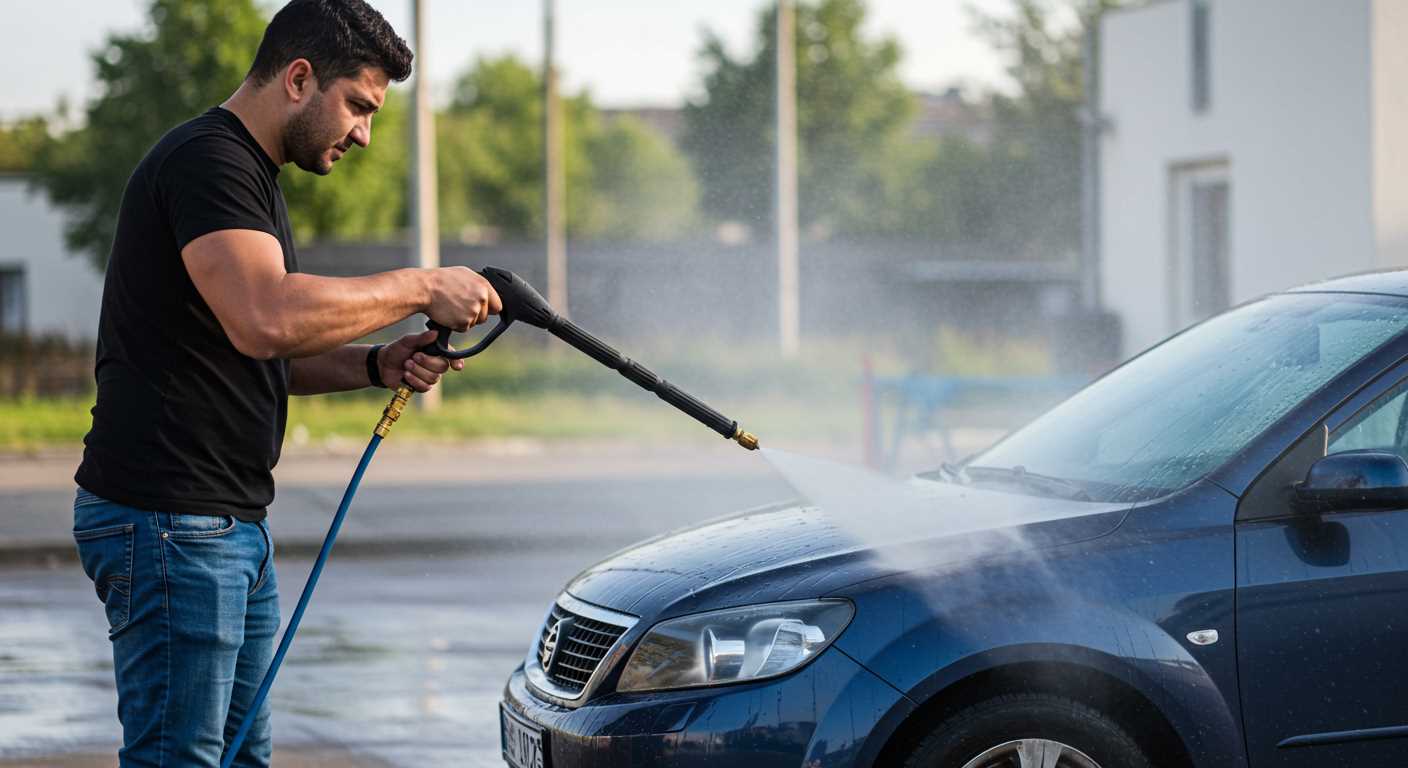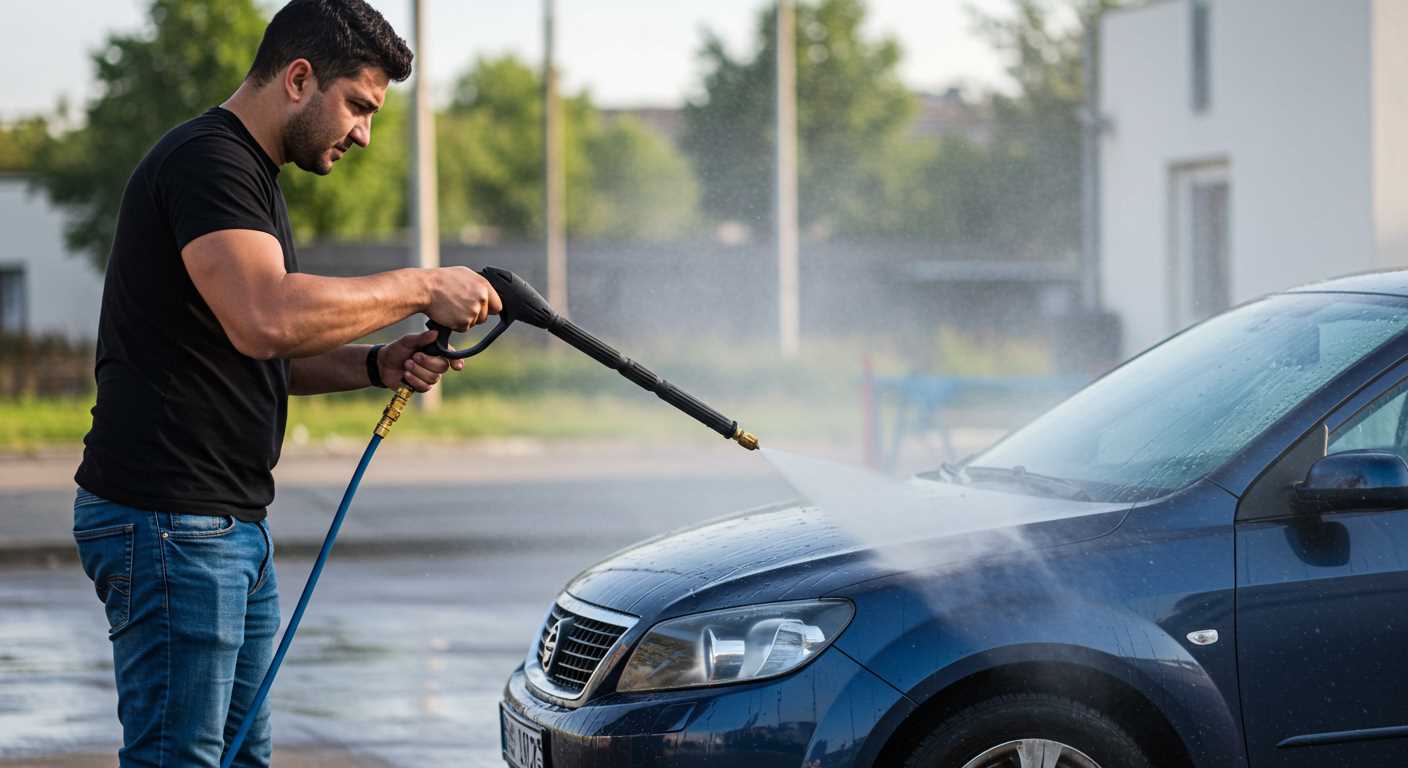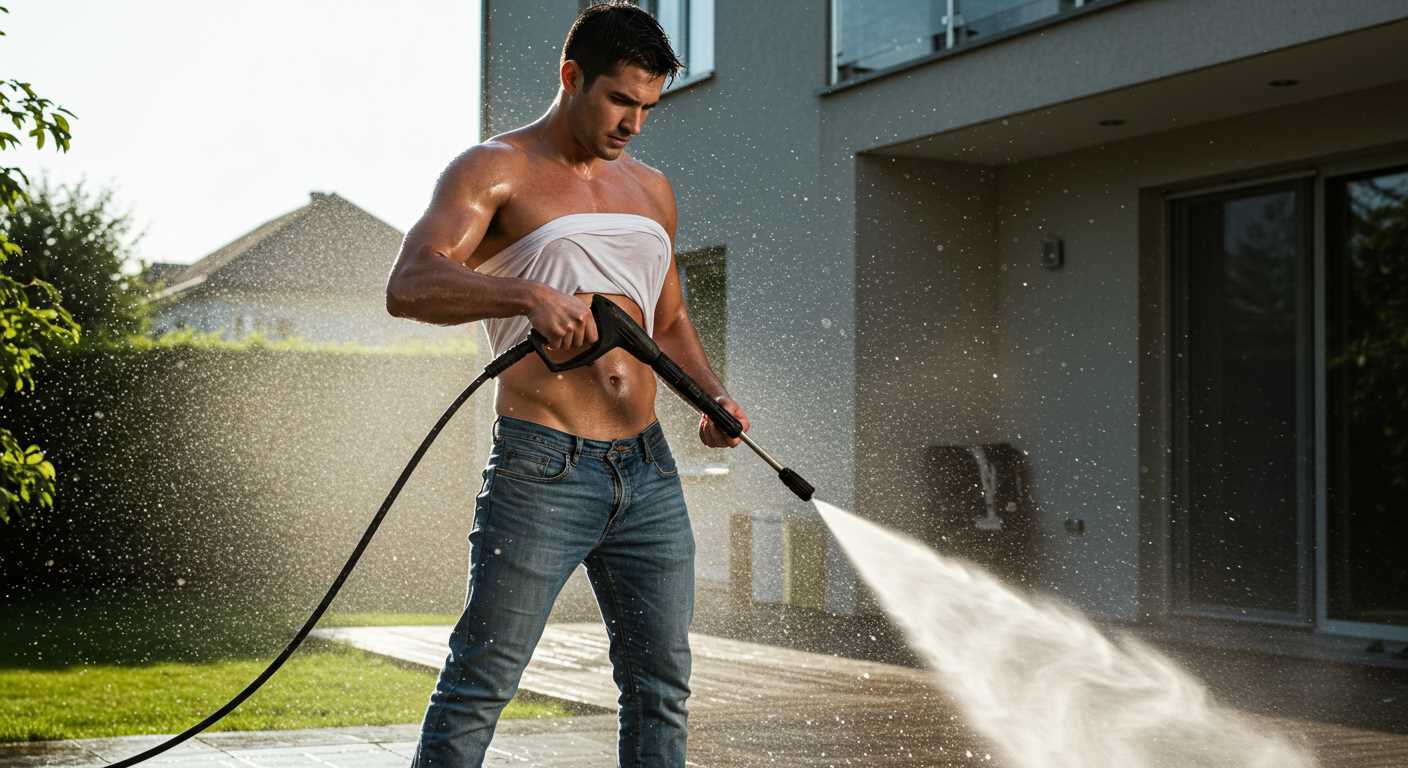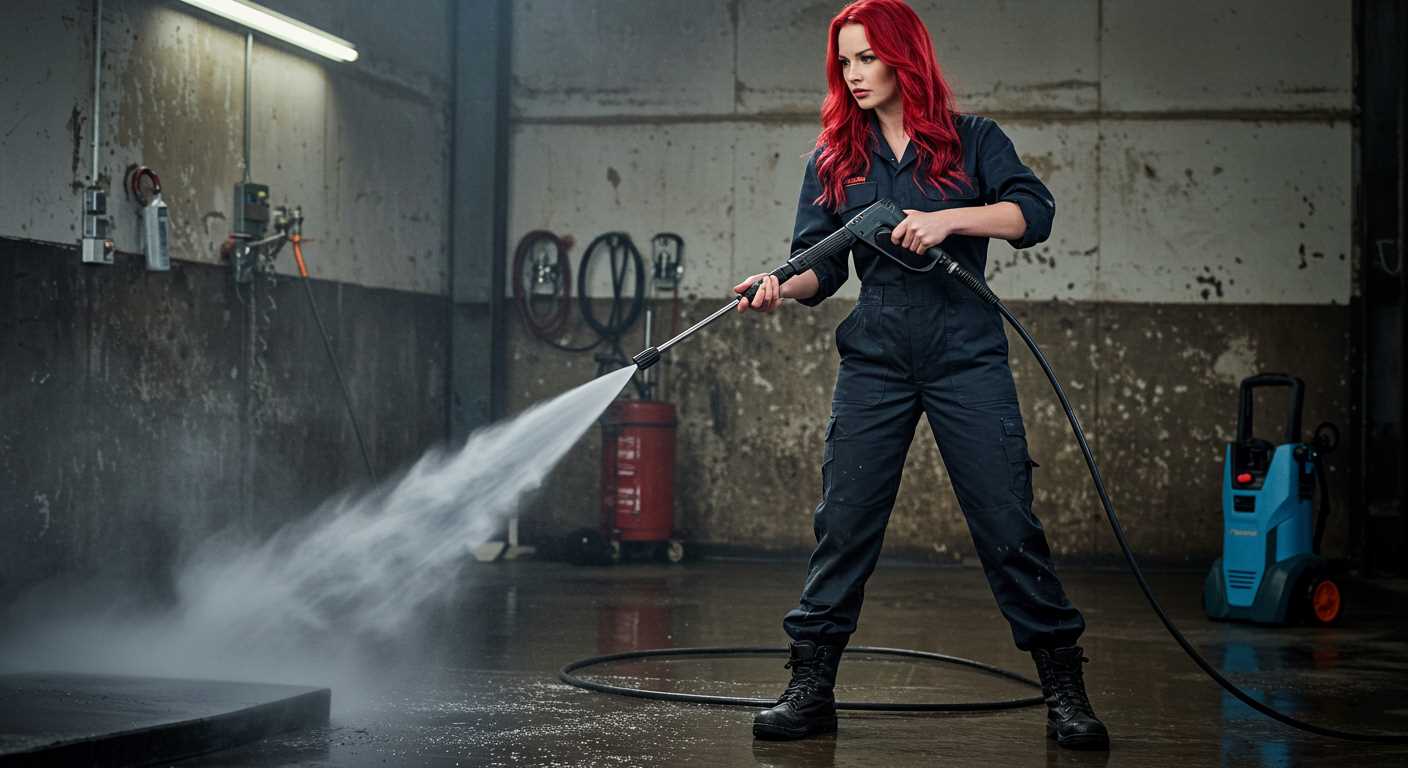




For optimal performance, soak parts in warm soapy water immediately after use. This simple step prevents debris from hardening and makes removal effortless. Ensure you use a soft brush or cloth to scrub away stubborn residues, particularly around nozzles and filters.
After rinsing, allow components to air dry completely. This reduces the risk of rust and keeps seals intact. If your equipment has been exposed to harsh substances, consider using a mild vinegar solution for a deeper cleanse, but always test on a small area first.
Regularly inspect all fittings and hoses for wear. A quick visual check can prevent future issues. If you notice any damage, replace parts promptly to maintain peak efficiency. Keeping your tools in top shape will extend their lifespan and ensure the best cleaning results every time.
Cleaning Your Karcher Accessories
First, ensure all components are disconnected from your machine. This prevents any accidental activation while you work. For nozzles and spray guns, a simple solution of warm water and mild detergent works wonders. Soak them for about 15 minutes to loosen grime, then use a soft brush to scrub stubborn areas.
For filters, remove them carefully and rinse under running water. Check for any clogs and clear them out. If the filter is heavily soiled, consider soaking it in a vinegar-water mix to break down mineral deposits. Rinse thoroughly afterward.
Hoses can accumulate debris inside. To maintain them, use a dedicated hose cleaning tool or a soft cloth to wipe down the exterior. Store hoses properly to prevent kinks that may lead to blockages. I’ve seen countless hoses damaged from improper storage, which only adds to the hassle.
For rotating brushes or surface cleaners, rinse them under water to remove dirt and debris. If you notice any bristles worn out, replace them to maintain optimal performance. I once let a brush go too long without replacement, and the results were disappointing on my subsequent clean.
After all parts are cleaned, allow them to air dry completely before reassembling. This prevents moisture buildup, which can lead to mould or mildew. Remember, regular maintenance not only extends the life of your equipment but also ensures you get the best results every time you use it. Trust me, a little effort goes a long way.
Identifying Different Karcher Attachments
Familiarity with various components of a cleaning system enhances the user experience. Each accessory serves a specific purpose, making it easier to tackle diverse cleaning tasks. Here’s a breakdown of some common tools and their functions.
Jet Nozzle: This attachment delivers a concentrated stream of water, ideal for removing stubborn dirt. It’s perfect for hard surfaces like patios and driveways, where grime builds up over time.
Rotary Brush: Equipped with rotating bristles, this tool is effective for gentle scrubbing. Ideal for vehicles and delicate surfaces, it ensures a thorough clean without risking damage.
Foam Lance: Great for applying a thick layer of foam, it helps break down dirt and grease on surfaces. This is particularly useful for washing cars or preparing surfaces for further cleaning.
Surface Cleaner: Designed for flat surfaces, this attachment allows for even cleaning over large areas. It’s especially handy for driveways or patios, providing a consistent finish.
Extension Wand: This accessory extends your reach, making it easier to access high or distant areas without straining. Perfect for cleaning gutters or second-storey windows.
Drain Cleaning Kit: A specialised tool for unclogging drains. It uses a flexible hose with a nozzle designed to break through blockages, making it a valuable addition for maintenance tasks.
Recognising these components optimises your cleaning routine. Each tool offers unique benefits tailored to specific jobs, enhancing efficiency and effectiveness in tackling various tasks.
Preparing for the Cleaning Process
Before tackling the task, gather all necessary supplies. Have a bucket of warm, soapy water ready. A soft brush or cloth will work wonders for scrubbing away grime. Keep a small container for any tools you might need, like a screwdriver for removing stubborn debris. Safety gear is equally important; wear gloves and goggles to protect yourself from chemicals and any contaminants.
Inspect each piece for damage. I once overlooked a small crack on a nozzle and ended up with water spraying in unexpected directions. A quick examination can save you from messy situations later on. If I find any broken parts, I recommend replacing them to ensure optimal performance.
Set up your workspace in a well-ventilated area. I’ve learned from experience that working outside or in a garage with good airflow helps to prevent the buildup of fumes from cleaning agents. Lay down an old towel or mat to catch drips and keep your surroundings tidy.
Lastly, organise the attachments by type. When I sort them into groups–like nozzles, brushes, and extension wands–it makes the process smoother and faster. This way, I can easily grab what I need without rummaging through a pile.
Gathering necessary cleaning supplies
Start with a bucket to hold all your items. It keeps everything organised and within reach. Next, grab a soft-bristle brush. This will help you remove stubborn dirt without scratching surfaces. A microfiber cloth is also handy for wiping down after scrubbing.
You’ll want a pair of rubber gloves to protect your hands from grime and any cleaning agents. If you have access to a gentle detergent, pick that up too. It can assist in breaking down tough residues without causing damage.
Consider a small container or spray bottle for mixing and applying solutions. This makes it easier to target specific areas and manage quantities. Lastly, ensure you have a clean water source nearby for rinsing. Keeping everything handy will streamline your process and make it more enjoyable.
Removing Attachments from the Washer
Begin by ensuring the machine is turned off and unplugged. This prevents any accidental activation while you’re working. Most components connect easily, but some might require a bit of finesse. Grab the nozzle or brush firmly and pull straight out to detach. If there’s resistance, check for a locking mechanism that needs to be released first.
Common Detachment Techniques
For those stubborn pieces, a gentle twist while pulling can help. Always pay attention to how they fit together, as this will guide you in reattaching them later. If you encounter a stubborn connector, a small amount of lubricant can ease the process, but avoid using any that could damage the materials.
Storing Removed Parts
Once separated, place each piece in a designated area, preferably a clean, dry space. Use a container or bag to keep them organised and prevent loss. It’s helpful to label them if you have multiple types, ensuring you’ll know exactly where to find everything when it’s time to put them back.
Cleaning Nozzles and Spray Guns
Begin with a thorough inspection of the nozzles and spray guns. Look for any debris or buildup that could obstruct water flow. A simple visual check often reveals blockages that need addressing. For stubborn residue, a soft brush can be handy. I’ve found that a gentle scrub with an old toothbrush works wonders for dislodging dirt without causing damage.
Once you’ve cleared visible debris, prepare a cleaning solution. A mixture of warm water and mild detergent is generally sufficient. Submerge the nozzles for a few minutes to allow the solution to penetrate any grime. This method has saved me countless hours over the years, especially after heavy-duty tasks where dirt clings stubbornly.
After soaking, use the soft brush again to tackle any remaining residue. Pay close attention to the small holes in the nozzles; it’s crucial to ensure they’re clear. In my experience, a needle can also be effective for clearing stubborn blockages, but handle it with care to avoid enlarging the holes.
For the spray guns, focus on the trigger mechanism and any connectors. A damp cloth can help wipe away dirt, while a bit of lubricant on moving parts keeps everything functioning smoothly. I’ve seen many people overlook this step, leading to premature wear and tear.
Finally, rinse everything thoroughly with clean water to remove any detergent residue. Let the components air dry completely before reattaching them to the machine. This simple practice can significantly extend the lifespan of these vital tools, ensuring optimal performance during your next cleaning session.
Washing the surface cleaner and brushes
After a thorough job, it’s essential to ensure your surface cleaner and brushes are free from grime and residue. Begin with the surface cleaner: detach it from the unit and rinse it with lukewarm water. This helps dislodge any dirt that may have accumulated during use. Use a soft brush or cloth to scrub the underside gently, focusing on the rotating arms and nozzles. If you notice stubborn stains, a mixture of mild detergent and water can assist in breaking them down.
For the brushes, remove any debris trapped in the bristles. A small comb or your fingers can work wonders here. Rinse the brushes under running water, making sure to remove all soap or cleaning solutions. Allow both items to air dry completely before storing them. This prevents mould and ensures they’re ready for the next session.
Remember to inspect the brushes for wear and tear. Replacing them when they show signs of damage will keep your cleaning tasks efficient. After all, a well-maintained tool performs better, much like a digital camera captures images on the photosites of a sensor. A little attention now saves time later!
Descaling the High-Pressure Hoses
For maintaining optimal performance, descaling hoses is crucial. Mineral deposits can accumulate over time, leading to reduced efficiency. Here’s a straightforward approach based on my experience.
- Prepare a descaling solution: Mix equal parts of white vinegar and water in a container. This natural solution effectively breaks down mineral buildup.
- Detaching hoses: Ensure the equipment is powered off and disconnect the hoses from both the unit and any attachments.
- Soaking: Submerge the ends of the hoses in the solution. If the entire hose cannot be submerged, use a cloth soaked in the solution to wipe down the exterior.
- Allow time: Let the hoses soak for at least 30 minutes. This process helps loosen stubborn scale.
- Scrubbing: After soaking, use a soft brush to scrub the interior and exterior surfaces gently. Pay attention to the nozzle end where buildup often occurs.
- Rinsing: Rinse thoroughly with clean water. Ensure all vinegar residue is removed, as it can lead to further deposits if left behind.
- Drying: Hang the hoses to dry completely before reattaching. This step prevents moisture-related issues.
From my years in the field, I’ve found that regular descaling of hoses not only enhances performance but also extends their lifespan. Establishing a routine for this task will keep your equipment running smoothly and save you from costly repairs down the line.
Inspecting for Wear and Damage
Before proceeding with any maintenance, examine components for signs of wear or damage. This step is crucial to ensure optimal functioning and longevity of your equipment. Here are some specific areas to focus on:
- Nozzles: Check for clogs or cracks. A damaged nozzle can lead to uneven spray patterns or reduced performance.
- Hoses: Look for kinks, abrasions, or leaks. Any visible wear can affect pressure delivery and may require replacement.
- Spray Guns: Inspect for cracks in the casing or loose fittings. A faulty spray gun can pose safety risks and should be replaced if compromised.
- Brushes and Surface Cleaners: Examine bristles for wear. Worn bristles can hinder effectiveness, so replace them if they appear frayed or misshapen.
If you find any damaged parts, it’s essential to replace them promptly. Continuing to use worn or broken components could lead to more extensive damage, potentially increasing repair costs.
To enhance your understanding of different types of devices, consider exploring options between pressure washer gas or electric models, as their attachments may vary in durability and maintenance requirements.
Regular inspections not only maintain performance but also extend the lifespan of your equipment, saving you time and money down the line.
Reassembling and Storing the Cleaned Accessories
After ensuring all components are thoroughly rinsed and dried, it’s time to put everything back together. Start with the nozzles and spray guns. Align each piece, ensuring they fit snugly without forcing anything. A gentle twist or push often secures them in place. I’ve found that taking a moment to check the seals and gaskets during this phase can save headaches later. If any parts appear worn or cracked, replace them before reassembling.
Organising Storage
Once reassembled, consider how to store these items to prolong their lifespan. I prefer keeping everything in a dedicated storage bin or toolbox. This not only protects them from dust and damage but also makes it easier to locate specific pieces when needed. Label compartments for different tools, like brushes, nozzles, and hoses, so you can quickly find what you need for your next task.
Maintenance Tips
Before tucking everything away, give a quick inspection. Ensure no debris is left in the connectors and that all components are dry to avoid mildew. I’ve learned the hard way that moisture can lead to rust, particularly on metal parts. If you have space, consider hanging hoses and brushes on hooks to keep them off the ground, preventing any unnecessary wear.
| Item | Storage Method | Maintenance Tips |
|---|---|---|
| Nozzles | Toolbox with compartments | Check for blockages; replace damaged seals. |
| Spray Guns | Vertical storage in a bin | Ensure trigger is not stuck; lubricate if necessary. |
| Brushes | Hang on hooks | Inspect bristles for wear; rinse thoroughly. |
| Hoses | Coiled on a reel or hooks | Check for kinks; store away from direct sunlight. |
Taking these steps guarantees your equipment remains in peak condition, ready for action whenever you need it. A little attention during storage pays off in performance and longevity.






.jpg)


